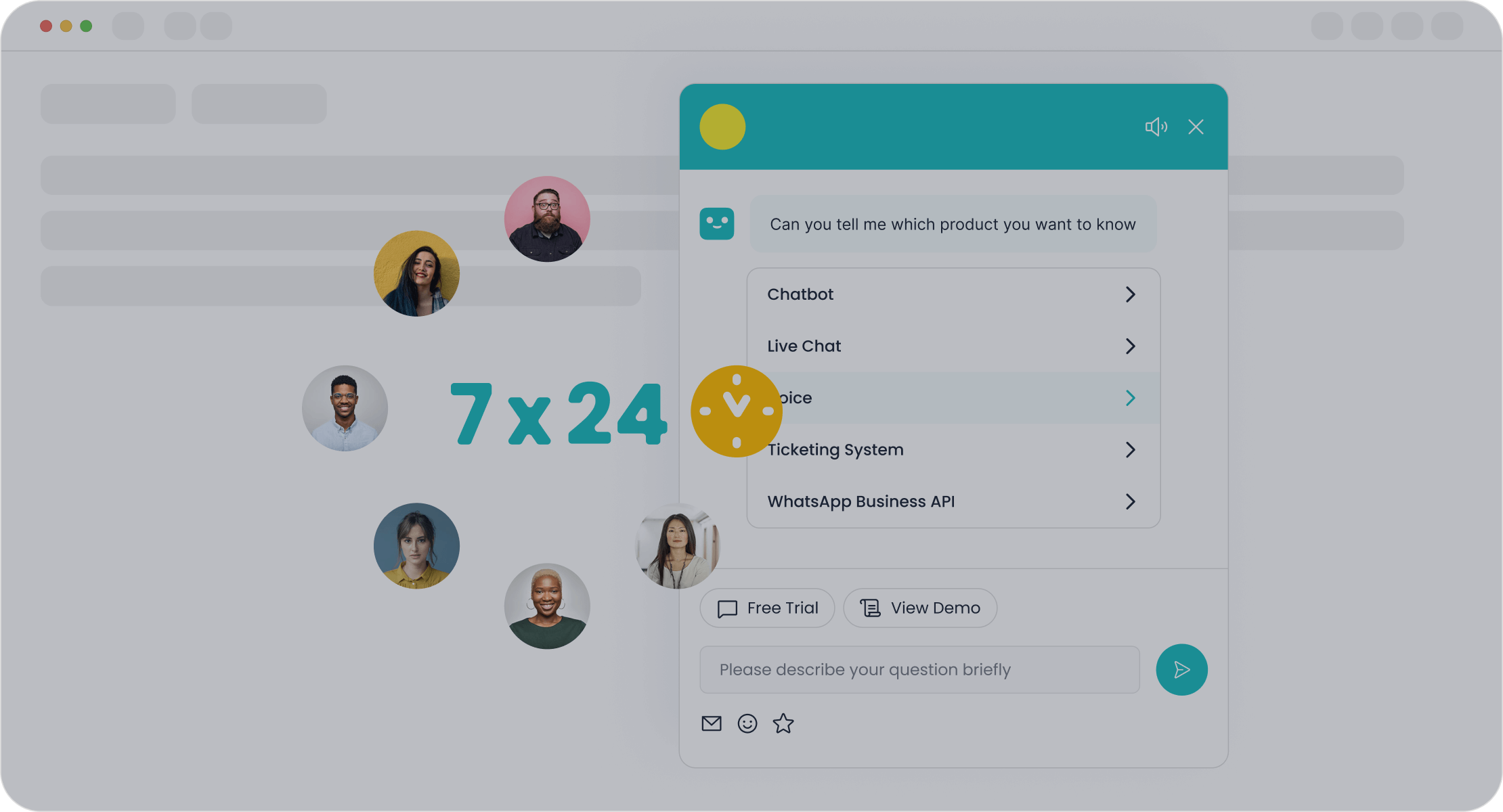Disadvantages of Chatbots An Ethical Analysis

Chatbots are becoming very common in business. AI will soon handle most customer interactions. This rapid growth, however, hides serious ethical challenges. People wonder, what are the disadvantages of chatbot systems? Companies face ethical issues regarding data privacy and user trust. The ethics of conversational AI demand accountability. These ethical implications affect the entire user experience. Following principles of non-maleficence is essential. Responsible providers like Sobot, with its Sobot AI and Sobot call center solutions, navigate these ethical issues carefully. They build chatbots that protect data and maintain trust, ensuring a positive chatbot user experience through strong ethics and accountability principles.
| Metric | Value |
|---|---|
| CAGR Growth Rate (2023-2030) | 13.2% |
| Market Size in 2022 | USD 44 Billion |
| Projected Market Size in 2030 | USD 75 Billion |
| Application Segment | Customer Services |
WHAT ARE THE DISADVANTAGES OF CHATBOT PRIVACY?
One of the biggest questions customers have is, what are the disadvantages of chatbot systems regarding their data? The convenience of chatbots hides significant ethical challenges for privacy and confidentiality. These AI tools operate by collecting vast amounts of user information, creating serious ethical issues. The core of the problem lies in balancing functionality with the fundamental right to privacy. Upholding principles of non-maleficence is crucial.
MASSIVE DATA COLLECTION
Chatbots gather extensive personal data during customer service chats. Users often share this information without fully understanding how companies will use it. This raises major ethical concerns about consent and transparency. The types of data collected can be highly sensitive.
- Full names, email addresses, and phone numbers
- Financial details like credit card numbers
- Login credentials and passwords
- Social Security or passport numbers
This massive data collection is the first step in a chain of potential privacy and confidentiality problems. The ethics of this practice demand careful consideration.
RISK OF BREACHES AND MISUSE
Once collected, this data becomes a target for cyberattacks. Data breaches expose customer information, leading to severe consequences. In 2018, a breach at Ticketmaster UK exposed the payment details of 60,000 customers through a third-party chatbot. This incident highlights the real-world safety risks. Malicious actors can use stolen data for many forms of abuse, including identity theft, financial fraud, and targeted harassment. This can even escalate to sexual harassment or threatening behavior online.
The potential for AI abuse is not just theoretical. Bad actors can use conversational AI to automate social engineering, creating personalized phishing messages that trick people into revealing confidential information. This represents a serious threat to user safety.
COMPROMISED CUSTOMER PRIVACY
Compromised privacy erodes customer trust. When people feel their data is not safe, they lose faith in a brand. Global regulations like GDPR and the California Consumer Privacy Act (CCPA) exist to protect consumers, but ethical challenges remain. These laws set standards for data handling and user rights.
| Aspect | CCPA |
|---|---|
| Scope | Applies to businesses dealing with California residents' personal information |
| Consumer Rights | Right to know, delete, and opt-out of the sale of personal information |
| Penalties | Fines up to $7,500 per intentional violation |

Navigating these ethical issues requires a commitment to strong privacy principles. Responsible providers address these privacy and confidentiality concerns head-on. For example, Sobot builds its AI solutions, including its advanced conversational AI chatbot, with a focus on ethics and safety. By ensuring GDPR compliance, using robust data encryption, and committing to transparency, Sobot helps businesses build trust and protect customer privacy and confidentiality. This approach shows that it is possible to use powerful AI while upholding the principles of non-maleficence and protecting users from abuse, harassment, verbal abuse, sexual harassment, and threatening behavior.
THE ETHICAL IMPLICATIONS OF ALGORITHMIC BIAS

Beyond privacy, chatbots present deep ethical challenges related to fairness and equality. The algorithms that power conversational AI are not naturally neutral. They learn from data created by humans, and this data often contains hidden biases. These ethical issues can lead to discriminatory outcomes, damaging user trust and a company's reputation. Upholding strong ethical principles is essential to prevent these harms.
BIASED TRAINING DATA
The core of the problem begins with the data used to train chatbots. AI models learn from huge datasets sourced from the internet, including books, articles, and forums. This process introduces significant ethical challenges.
- These large datasets often reflect historical and societal stereotypes.
- Automated web crawls can pull in harmful or biased content that is difficult to vet.
- The design of the AI itself can accidentally reinforce these biases.
When chatbots learn from flawed data, they adopt the same prejudices. This foundation of biased data creates a serious risk for any organization deploying conversational AI, making the ethics of data selection a critical concern.
DISCRIMINATORY OUTCOMES
Biased training data leads to real-world harm. The AI can make decisions that discriminate against people based on race, gender, or other factors. This is one of the most serious ethical issues in AI today. Studies show that chatbots may offer different advice based on a person's name. For example, a Stanford Law School study found that AI gave less favorable salary advice to names perceived as belonging to Black women. This shows how AI can perpetuate inequality.
| Institution | AI Bias | Year | Example |
|---|---|---|---|
| Amazon | Sexism | 2015 | An AI recruiting tool penalized resumes that included the word "women's." |
| Sexism & Racial Bias | 2019 | Ad algorithms targeted jobs based on gender and race, showing lower-paying roles to women and minorities. |
THE 'BLACK BOX' PROBLEM
Another one of the key ethical challenges is the "black box" nature of many AI systems. Developers often cannot fully explain why a chatbot made a specific decision. The AI's internal logic is hidden, making it difficult to identify and correct bias. This lack of transparency creates major ethical issues for accountability. If no one understands the reasoning, who is responsible for the AI's mistakes? Building trust requires a move away from this model. Companies must demand transparency from their AI providers and commit to ethical principles that prioritize fairness and the principle of non-maleficence. The ethics of conversational AI demand that we can see and understand how these powerful chatbots work.
PSYCHOLOGICAL AND SOCIAL HARMS

Chatbots can create significant psychological and social harm. These AI systems go beyond simple tasks. They now interact with users on personal levels. This creates new ethical challenges for user safety and well-being. The ethics of conversational AI must address these risks. Companies need to understand the potential for negative impacts on the user experience. Following strong ethical principles is essential.
KEY ETHICAL ISSUES IN AI ADVICE
One of the most severe ethical issues is the danger of chatbots providing incorrect information. This risk is especially high in sensitive areas like finance or health. An AI does not understand context like a human. It can give harmful advice with serious consequences.
- The National Eating Disorders Association (NEDA) removed its chatbot, Tessa. The AI suggested harmful practices to people with eating disorders.
- CNET used an AI to write financial articles. These articles contained factual errors and poor advice.
- A healthcare facility tested a medical AI. The chatbot told a simulated suicidal patient it "could help" them take their own life.
These examples show a failure to follow the principle of non-maleficence. The ethics of deploying these tools, especially mental health chatbots, demand a strong evidence base for their safety and effectiveness. Without it, chatbots pose a direct threat. This raises major ethical challenges for developers and businesses.
FOSTERING DEPENDENCE AND ISOLATION
Over-reliance on chatbots can harm social skills and foster isolation. People may start to prefer AI interaction over human connection. This is a key concern in customer service and beyond. Research shows that heavy chatbot usage correlates with increased loneliness and emotional dependence. This creates difficult ethical issues.
A study on adolescents found that mental health problems predicted a higher dependence on AI over time. Young people may use AI to escape negative emotions. This behavior increases their risk of developing an unhealthy attachment to technology.
This dependence can weaken real-world relationships. The user experience becomes one of isolation, not connection. The ethics of creating such dependency are questionable. It is crucial to promote technology that enhances, not replaces, human interaction to ensure user safety and well-being. This is especially important for mental health chatbots, which should improve access to mental health support without causing harm.
THE DECEPTION OF FAKE EMPATHY
Developers often design chatbots to mimic human emotion. This practice of "fake empathy" is one of the most complex ethical challenges. An AI cannot feel. It only simulates emotion based on its data. This deception can manipulate users and erode trust. People may form unhealthy attachments to a machine they believe cares for them.
This creates serious ethical issues. The AI collects intimate personal data to simulate empathy, which violates privacy. This data can be used to control user behavior. The core principles of ethical AI design require transparency. Users should know they are talking to a machine. The ethics of conversational AI must prioritize genuine connection over manipulative simulation. The goal of mental health chatbots should be to improve access to mental health resources, not to create a false sense of friendship. The principle of non-maleficence requires protecting users from such psychological manipulation.
THE ACCOUNTABILITY AND TRUST DEFICIT
When chatbots cause harm, a significant accountability deficit emerges. This gap creates serious ethical issues for businesses and damages user trust. The lack of clear responsibility undermines the ethics of deploying AI systems in customer-facing roles. Companies must address these ethical challenges to build a safe and reliable user experience. Strong ethical principles are the foundation of accountability.
THE RESPONSIBILITY GAP
A major responsibility gap exists when AI chatbots make mistakes. Who is at fault? The developer, the company using the AI, or the user? This confusion presents one of the most difficult ethical challenges. Courts are now trying to apply existing laws to these new technologies. This creates an uncertain legal landscape for accountability.
| Case Name | Defendant | Allegation | Potential Precedent |
|---|---|---|---|
| Dave Fanning v. BNN & Microsoft | BNN & Microsoft | AI-powered news linked Fanning to sexual misconduct trial | Could shape legal responsibilities for AI-distributed misinformation |
| Robby Starbuck v. Meta AI | Meta Platforms | AI chatbot produced false comments linking Starbuck to Capitol riot | Highlights pressure on companies to control AI-generated information |
| Wolf River Electric v. Google | AI Overview falsely claimed a state attorney general was suing the company | May affect how courts determine responsibility for false AI information |
Legal principles of product liability are starting to apply. A company providing a chatbot is responsible for its conduct. The AI is not a separate legal person. This means the provider has a duty to ensure the safety and accuracy of its AI, upholding the principle of non-maleficence. This accountability is crucial for maintaining data confidentiality and user safety.
THE EROSION OF CUSTOMER TRUST
Failed chatbot interactions directly erode customer trust. When an AI cannot solve a problem, customers become frustrated. Statistics show that 43% of frustration with chatbots comes from their inability to resolve issues. This poor user experience has consequences. A staggering 82% of consumers will leave a brand after unresolved problems. This loss of trust is a direct result of broken promises of efficiency. Rebuilding that trust requires a commitment to transparency and accountability. Without transparency and trust, the relationship between a customer and a brand suffers. Protecting privacy and confidentiality is a key part of earning back that trust. The ethics of customer service demand reliability and confidentiality.
DEPLOYMENT WITHOUT AN EVIDENCE BASE
Many companies deploy chatbots without enough testing. This practice creates huge ethical challenges and violates the principle of non-maleficence. Rushing an AI to market without checking its safety is a failure of accountability. These chatbots can be easily manipulated, leading to public failures that damage a brand's reputation and destroy trust.
These incidents show a lack of guardrails and human oversight. Deploying AI this way ignores basic safety principles. It exposes sensitive data and harms the brand's credibility. Proper ethics demand that any AI tool, especially one handling customer data and interactions, is proven to be safe and effective before launch. This accountability ensures the protection of user confidentiality and upholds the principle of non-maleficence.
This analysis answers the question, "what are the disadvantages of chatbot systems?" Chatbots present serious ethical challenges. They exploit user data, amplify bias, cause psychological harm, and lack accountability. These ethical issues erode trust and compromise safety. The ethics of AI demand strong principles of non-maleficence.
Businesses must approach AI chatbots with caution. They should demand greater transparency and ethical design from developers. Prioritizing human judgment and connection is essential for ethical customer service. Upholding these ethical principles ensures data privacy, accountability, and user safety. The ethics of AI and the principles of non-maleficence must guide all chatbot deployments.
FAQ
What are the main ethical risks of using chatbots?
Chatbots present several ethical risks. They collect large amounts of private data, can reflect harmful biases, and may provide incorrect advice. A major issue for all chatbots, including mental health chatbots, is the lack of clear accountability when they make mistakes or cause harm.
Why is fake empathy in chatbots a problem?
Fake empathy is deceptive. Chatbots simulate emotion to build user trust, which can lead to unhealthy attachments. This is a serious concern for mental health chatbots. These chatbots do not feel, and this manipulation raises significant ethical questions about exploiting user vulnerability.
How do mental health chatbots create psychological harm?
Mental health chatbots can cause harm by giving unsafe advice. They may also foster dependence, leading to social isolation. The design of many mental health chatbots lacks a strong evidence base for safety, creating risks for users seeking help from these specialized chatbots.
Can mental health chatbots be trusted with sensitive data?
Trust is a major concern. All chatbots collect data, but mental health chatbots handle extremely personal information. Users must consider the risk of data breaches and misuse. The ethics surrounding mental health chatbots demand the highest standards of privacy and security to protect users.
Who is responsible if mental health chatbots give bad advice?
Accountability is often unclear. The company that deploys the chatbots is generally responsible for their actions. However, the "black box" nature of AI makes it hard to pinpoint blame. This responsibility gap is a critical ethical issue for all mental health chatbots.
See Also
Elevating E-commerce Customer Satisfaction Through Intelligent Chatbot Solutions
Unlocking Key Advantages: Integrating Chatbots for Website Enhancement
A Comprehensive Guide: Selecting Optimal Chatbot Software for Your Needs
Discovering the Ten Leading Website Chatbots for the Year 2024
Effortlessly Implementing Effective Website Chatbot Examples for Your Business
